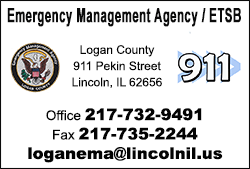|
 Both companies already have approvals for their TAVR (transcatheter
aortic valve replacement) systems for use in patients too frail to
endure surgery and those deemed at intermediate risk. Approvals in
low-risk patients would open up a large new population for the
devices seen as vital growth drivers for the companies. Both companies already have approvals for their TAVR (transcatheter
aortic valve replacement) systems for use in patients too frail to
endure surgery and those deemed at intermediate risk. Approvals in
low-risk patients would open up a large new population for the
devices seen as vital growth drivers for the companies.
An estimated 165,000 low-risk patients suffer from severe aortic
stenosis each year in the United States, Western Europe and Japan, a
condition that can lead to heart failure in as little as two years,
Medtronic said.
With TAVR, the replacement heart valve is threaded into place
through an artery via catheter, sparing patients chest-cracking
surgery.

"When I do these patients in the morning, (later that day) I find
them sitting in a chair, eating dinner, asking when they can go
home," said Dr. Michael Reardon, who led the Medtronic study. "As a
heart surgeon, there is no incision I can make that's small enough
to allow my surgical patients to do that well."
Edwards, which holds about 70 percent of the U.S. TAVR market, said
it expects the global market to double to about $7 billion in 2024.
The two companies have similar market shares outside the United
States.
The Edwards Sapien 3 TAVR system proved superior to surgery on the
main goal of its 1,000-patient trial, a composite of rate of stroke,
death and rehospitalization one year after the procedure. The rate
for TAVR was 8.5 percent versus 15.1 percent for surgery, data
unveiled at the American College of Cardiology scientific meeting in
New Orleans showed.
At 30 days, the Sapien also resulted in a lower rate of stroke - 0.6
percent versus 2.4 percent - which had been the primary safety
concern when these systems were first introduced.
[to top of second column] |

Medtronic's rival Evolut TAVR system met the main goal of its
so-called non-inferiority trial in more than 1,400 low-risk
patients, proving as safe and effective as surgery, data presented
at the same meeting showed.
The combined rate of all-cause death or disabling stroke after two
years was 5.3 percent for Evolut versus 6.7 percent for surgery, a
difference considered not statistically significant.
At the 30-day mark, Evolut was significantly better on safety. With
TAVR, the composite rate of death or disabling stroke was 0.8
percent versus 2.6 percent for surgery. TAVR was also better on
other safety measures after 30 days.
TAVR systems can cost about five times as much as traditional
replacement heart valves, providing a significant source of revenue
for the companies. But they can be more cost effective overall due
to much shorter hospital stays and recovery times.
Jefferies analyst Raj Denhoy said he expects the TAVR market to grow
in both size and competition, with Boston Scientific's Lotus system
poised for potential U.S. approval this year.
TAVR "is pretty dramatic technology and it should be used in a lot
more patients than it's being used in already," Denhoy said.
(This story corrects the day of the scheduled presentation, typo on
number of patients in paragraph 9)
(Reporting by Tamara Mathias in Bengaluru; editing by Bill Berkrot)
[© 2019 Thomson Reuters. All rights
reserved.] Copyright 2019 Reuters. All rights reserved. This material may not be published,
broadcast, rewritten or redistributed.
Thompson Reuters is solely responsible for this content. |